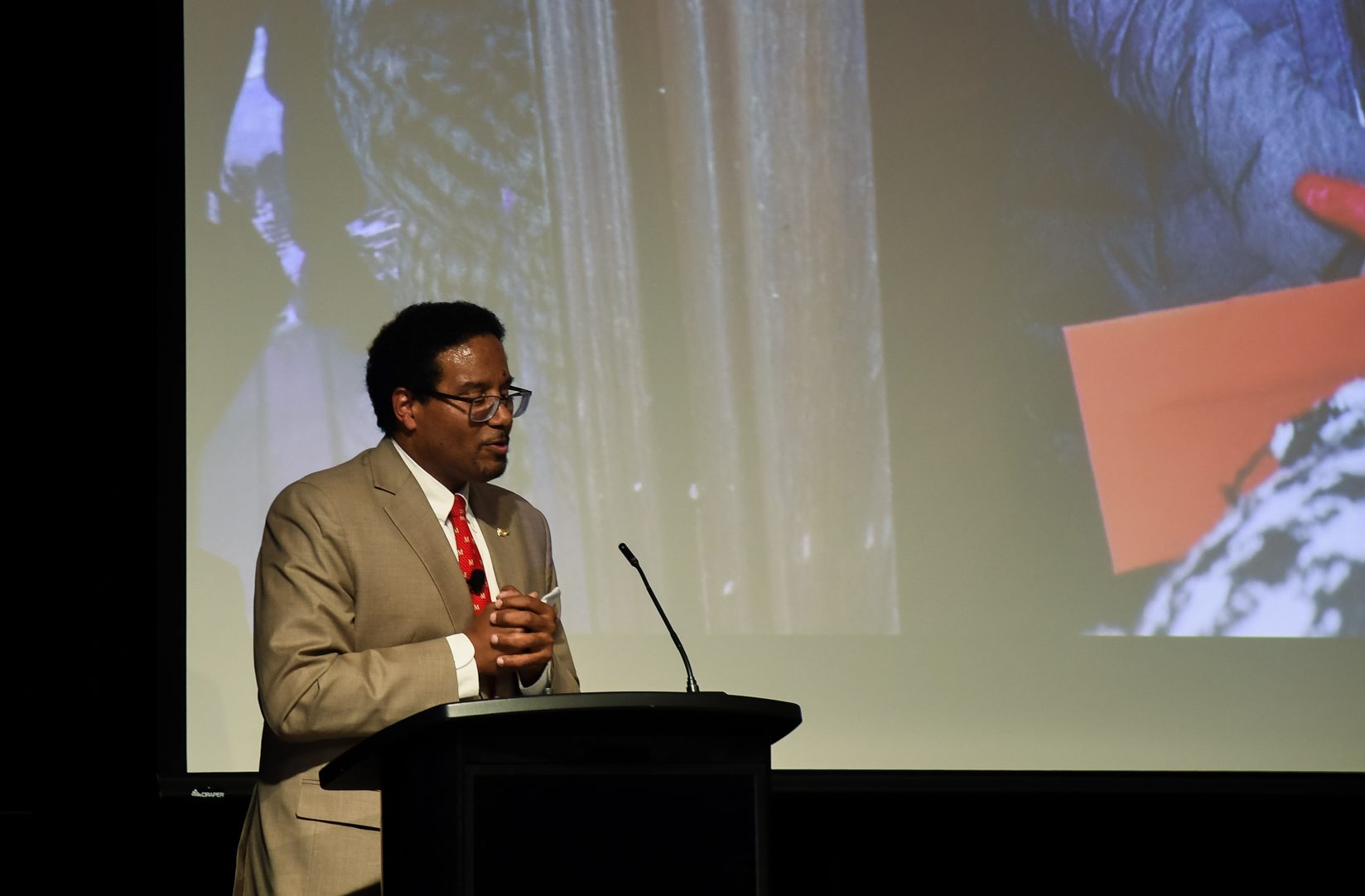University of Maryland president Darryll Pines provided updates on university facilities and campus research programs during his biannual State of the Campus address at Wednesday’s University Senate meeting.
Pines highlighted the recently-finalized Campus Facilities Plan and a new chemistry building opening this spring.
The facilities plan includes projects and initiatives the university will pursue in the coming decades. Maps in the plan center around the Purple Line. More green spaces, plazas and pathways will be added across campus, Pines said.
Currently, there is a large empty space behind McKeldin Library, Pines said. The university plans to develop this space into somewhere students can gather.
The new chemistry building will have 34 research labs, a large conference room and 12 meeting and huddle rooms. The university has scheduled a dedication ceremony for the building on April 11.
“It’s going to be a great place to learn and conduct research with top-quality labs,” Pines said. “[The] facilities will give us a platform to finding solutions to the grand challenges of our time in the field of chemistry.”
[2 micromobility vehicles catch on fire at UMD]
The provost has invested $30 million over the past few years in 50 grassroots projects submitted by university faculty, Pines said. Pines focused on three of those projects in his address.
One of these projects — the Maryland Initiative for Literacy and Equity — aims to increase literacy around the state. It also provides professional development for public school educators and administrators. Recently, the initiative earned a $250,000 grant from Prince George’s County to run after-school reading clinics at two nearby elementary schools, Pines said.
Other projects are monitoring sea level rise to create better weather prediction models and developing an app to help farmers across the world increase their productivity and boost food security, Pines said.
The president also updated the senate about the incoming class of admitted students. The current applicant pool has the highest average weighted high school GPA in the history of the university, he said.
“The numbers continue to climb. The interest continues to be high to come to our institution,” Pines said.
Pines acknowledged the Supreme Court’s June decision prohibiting universities from considering students’ race and ethnicity in the college admissions process.
This university is adhering to this ruling but is not wavering in its dedication to diversity, Pines said.
“We are all committed to our holistic application process,” he added.
[UMD tour guides demand hourly wages from university administration]
The incoming freshman class includes students from every county in Maryland, all 50 states and 69 countries, according to Pines.
Pines congratulated Jeanette Epps, an astronaut and alum of this university, who launched into space on Sunday to spend the next six months aboard the International Space Station as a flight engineer.
Epps is only the second Black woman to ever join an ISS mission and is among only 610 people to have ever gone to space, Pines said.
“[It’s a] very unique club to be in,” he said.
During Wednesday’s meeting, the senate voted in favor of establishing a master’s of science in climate finance and risk management and a master’s of public administration.
“The relationship between science and finance is an emerging area and climate change discourse,” Wendy Stickle, the chair of the senate’s programs, curricula and courses committee, said about the need for a climate finance and risk management graduate degree.
This change requires new tools that the master’s program will be able to provide, she said.



